A Guide to Loving Gold
From Rolex to Omega and all the alloys in between.
“This is gold, Mr. Bond. All my life, I’ve been in love with its color… its brilliance, its divine heaviness.” — Auric Goldfinger, Goldfinger (1964)
“I love gold! The look of it, the smell of it, the taste of it, the texture!” — Goldmember, Austin Powers in Goldmember (2002)
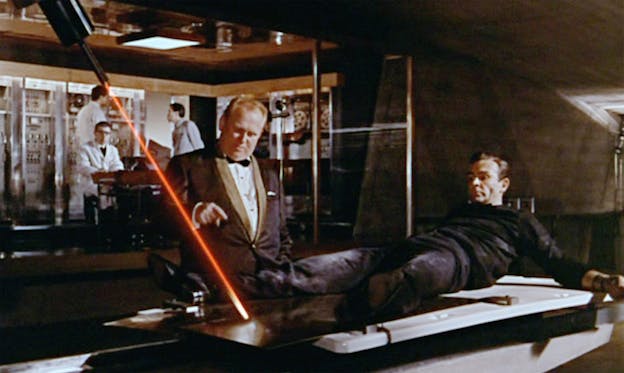
Few, if any, fascinations have occupied as much space in the human mind or motivated as much human decision-making as gold. This yellow metal, with its warm hue and vibrant luster, has captured the hearts of humanity for arguably as long as we have been recognizable as such.
In that fashion, gold is unique among precious metals, with its value (whether intrinsic or perceived) recognized by just about every civilization throughout history. Arguably, the attention paid to gold, and learning how to manipulate and form it, is one of the few commonalities across Cradles of Civilization, and gold has been used to similar effect in cultures on every continent.
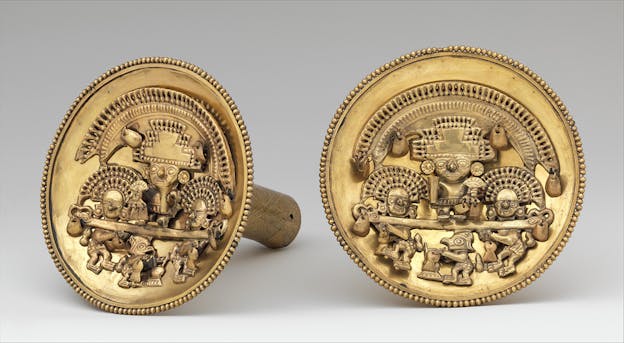
While I could spend this whole article, and several books afterward, discussing the various ways in which gold has been used across history, I am technically here to talk about watches. So, assuming we can all accept that gold has some sort of longstanding hold on humanity, I should probably pivot in that direction.
Why Gold is Good For Watches
Even ignoring its value and appeal, gold is a remarkable material. Dense, resistant to corrosion, highly malleable, and workable at incredibly thin dimensions, gold is an ideal metal for watchmakers, especially when you’re trying to make a watch case.
While other metals certainly have similar positive properties to gold, it is hard to find another element that matches gold’s balance of workability and longevity, something which can be observed by examining two other historically popular case-making metals, silver and platinum.

Where gold is ductile and easy to shape, platinum (though corrosion resistant) is “sticky” eating up tooling and bits at a far faster rate than gold, and where gold resists any sort of degradation, silver (though malleable) tarnishes and requires upkeep to maintain its appearance.
Simply put, gold is a happy medium between the many competing needs of watchmakers. Of course, watchmakers have rarely, if ever, used pure 24k gold in the making of watches. Even ignoring what would be an immense cost, a watch made of 24k gold would be too soft to hold up to the stresses of life, so most modern gold watches are made from 18k gold.
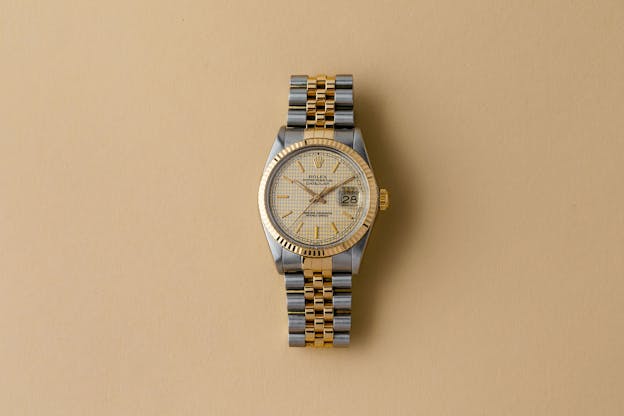
18k gold is any gold alloy made up of 75% gold and 25%, well, just about anything else you want to throw in there. That 25% can make a huge difference in the gold you wind up with at the end of the day, and watch brands have put a lot of R&D time and money into developing high-tech gold alloys, especially in recent years.
So, with all this preamble out of the way, here is a quick breakdown of some of the more interesting proprietary gold alloys on the market, as well as what sets them apart.
Everose Gold
One of the things that has set Rolex apart in recent decades is how seriously they have taken the shift to in-house production. “In-house” can be somewhat of a nebulous term and is certainly one that has generated its fair share of controversy in recent years, but when Rolex says they produce their watches fully in-house, it’s a hard claim to dispute. I mean, Rolex even produces hairsprings in-house, something that doesn’t sound all that impressive until you realize that there are fewer than a dozen brands across the industry that reject the use of off-the-shelf hairsprings.

What no one does, at least to my knowledge, is operate a full metal foundry to produce proprietary blends of every metal needed to produce a watch. Well, no one but Rolex, that is. The Rolex foundry in Plan-Les-Ouates produces everything from Oystersteel to the focus of this section, Everose gold.
Introduced in 2005, Everose is the standout achievement of the Rolex foundry. Though traditional rose gold blends are undeniably beautiful, they have an inherent flaw in their makeup — as the copper that produces the rosy color in the alloy corrodes, the pinkish-red color will “fall out” of the gold, leaving you a much more traditionally yellow gold.

While some people really like the look of this aged rose gold (count me among them), Rolex likes to do everything they can do to ensure that their watches maintain a consistent look across decades. Moves to ceramic bezels that will never fade and Chromalight lume that will glow as bright 30 years down the line as it will leaving the factory demonstrate Rolex’s commitment to their promise of producing a watch that lives up to the Rolex name.
Everose gold accomplishes this through a proprietary blend that Rolex says is made up of “at least 75% gold, 20% copper [which provides the warm hue], as well as palladium and indium.”

As Rolex is wont to do, they have never (and will never) give us an exact recipe for Everose gold, but it’s enough to know that whatever they’ve done has produced a rose gold of exceptional warmth and color that will stay maintain its color far longer than any of us will be around.
(If you want to read more about Rolex’s use of proprietary metals, check out this breakdown by Justin Mastine-Frost, written for The 1916 Company in 2020.)
Rose Gold is More Than A Rolex Thing
The same ambitions that led to Rolex creating Everose gold have also led a host of other brands to attempt to create more stable, enduring rose gold alloys. King Gold from Hublot, Eon Gold from Roger Dubuis, and Goldtech from Panerai are just some of this latest generation of rose golds that promise many of the same benefits of Everose gold.

Though the proportions and blends are unique brand to brand, the basic premise is consistent. By introducing a small amount of platinum, watchmakers can produce a rose gold case with a more permanent color that will refuse to fade as the years go on.
The focus on rose gold in recent years doesn’t mean that the reach of material science is limited just to the copper-gold alloy. Mixes like Montblanc’s Lime Gold, which mixes gold with silver and iron to produce a subtly green hue, offer an exciting twist on the premise of yellow gold, and A. Lange and Söhne’s signature Honeygold provides a bridge between rose and yellow gold, while also managing to defy classification and description.
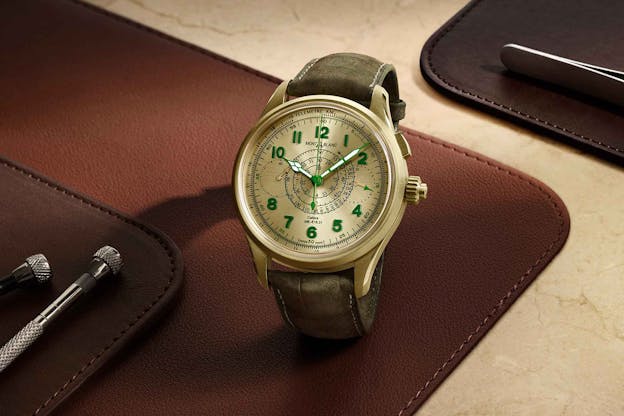
Suffice it to see, you know Honeygold when you see it, and I’ve yet to discuss the material with anyone who doesn’t at least kind of like it (although I allow for the DMs I will inevitably receive refuting my claims of widespread appeal). Beyond its color, Honeygold offers the added benefit of a harder alloy, more resistant to cosmetic aberrations (scratches) over time.

But where Honeygold is harder than gold and perhaps more scratch-resistant, I am only aware of one material on the market that claims complete immunity from the dreaded curse that is scratching your watch — Hublot’s Magic Gold.
It’s worth saying that Magic Gold probably isn’t magical in the traditional sense, but the lack of an admission letter from Hogwarts doesn’t take anything away from the impressive material, which — if I were to explain it simply — is a blend of ceramic and gold.

My colleague Jack Forster explained the process in more detail than I can muster here in a review of the Hublot Big Band MP-11 Magic Gold, which you can read here, but suffice it to say that the process results in what is fully and completely certified as 18k gold while coming it at right around 1,000 on the Vickers hardness scale — roughly 7 times harder than typical 18k gold alloys.
Swatch Group Goes For the Gold
No conversation about proprietary golds in 2023 would be remotely complete without taking a good look at Swatch Group. No one, and I mean no one, has produced as many proprietary new “golds” in the last decade as has Swatch group.
The first hints that Swatch group was getting interested in the specifics of gold came in 2012 when Omega released the Omega Seamaster Planet Ocean Chronograph in red gold with a Ceragold bezel.

What’s Ceragold? Basically, Ceragold is a method of integrating gold with ceramic, but where Hublot’s Magic Gold blends the two materials into a single composite, Ceragold allows the two to live next to one another harmoniously.
Similar in effect, though not in process, to Liquidmetal (the Liquidmetal process is as it sounds, involving melting a ring of Liquidmetal over a ceramic bezel before polishing flat, Ceragold is built on an additive electrostatic process), Ceragold provided a clue that Swatch group was starting to think about gold in a real way, something which has borne out in the years since.

The whole Swatch group gold project kicked off in earnest in 2013 with the release of Sedna red gold, first used in the Omega Constellation. Named after the far-off dwarf planet Sedna (known in astronomy circles for its distinct redness), which in turn was named after the Inuit goddess of sea and marine animals, Sedna red gold has a far more intense color than standard rose golds and has been used across the Omega lineup, as well as by Blancpain — Omega’s sister brand in the Swatch group lineup.
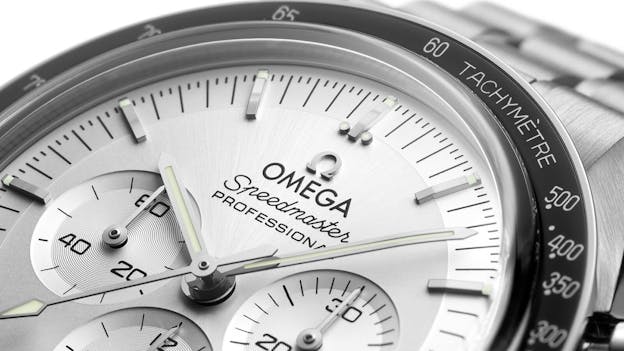
In the decade since the launch of Sedna red gold, Omega has also launched its own white and yellow golds, respectively named Canopus and Moonshine. Canopus is made of a combination of gold, palladium, platinum, and rhodium and offers a refreshingly brilliant take on the white metal, a trait reflected in its name, which comes from the star Canopus, which is 10,000 times brighter than our own sun.
Moonshine yellow gold was introduced for the 50th anniversary of the moon landing and offers up a shade of yellow gold slightly paler than we have come to expect. Meant to evoke the pale light of the moon, Moonshine gold has an easy-wearing quality that sacrifices none of the fun of more traditional yellow gold.

Lastly, we have Bronze Gold, which actually takes us away from the world of 18k gold. More copper than gold, Bronze Gold clocks in at 9k (or 37.5% gold) and 5% copper. What results is a color paler than Sedna gold but not nearly as yellow as Moonshine. The high gold content also slows the development of patina in the bronze alloy, though it does not halt it altogether. Like Sedna gold, Bronze Gold has also been used by Blancpain, notably in the Blancpain Fifty Fathoms 70th Anniversary Act 3 watch released a few weeks ago.
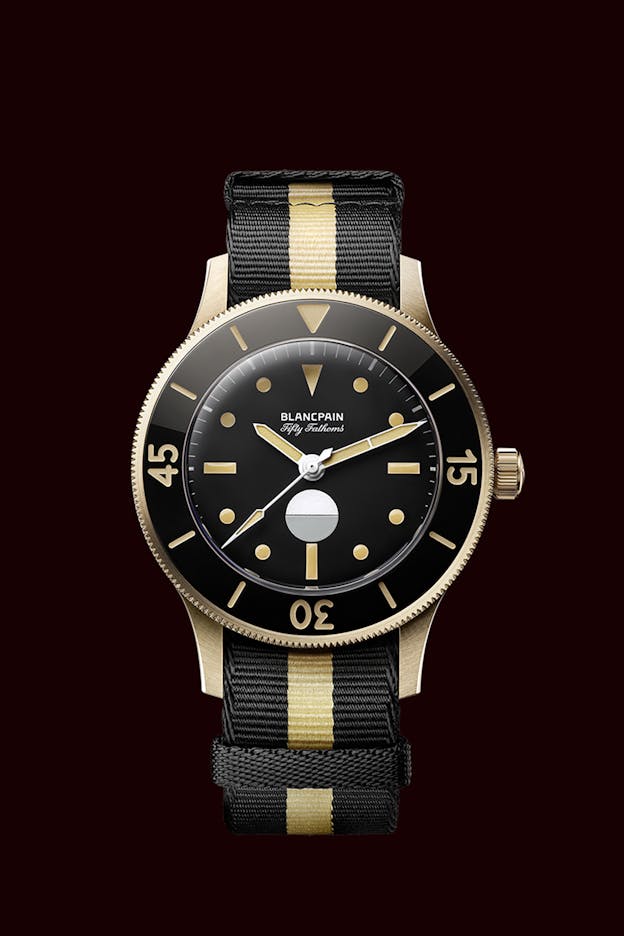
One of the best parts of watch enthusiasm is that there is always something new to learn, some other tangent to follow, and some sort of rabbit hole to fall into. But, at the end of the day, it doesn’t matter whether your watch is gold-plated or made from the most revolutionary gold alloy on the market, gold watches are fun, so enjoy them.

